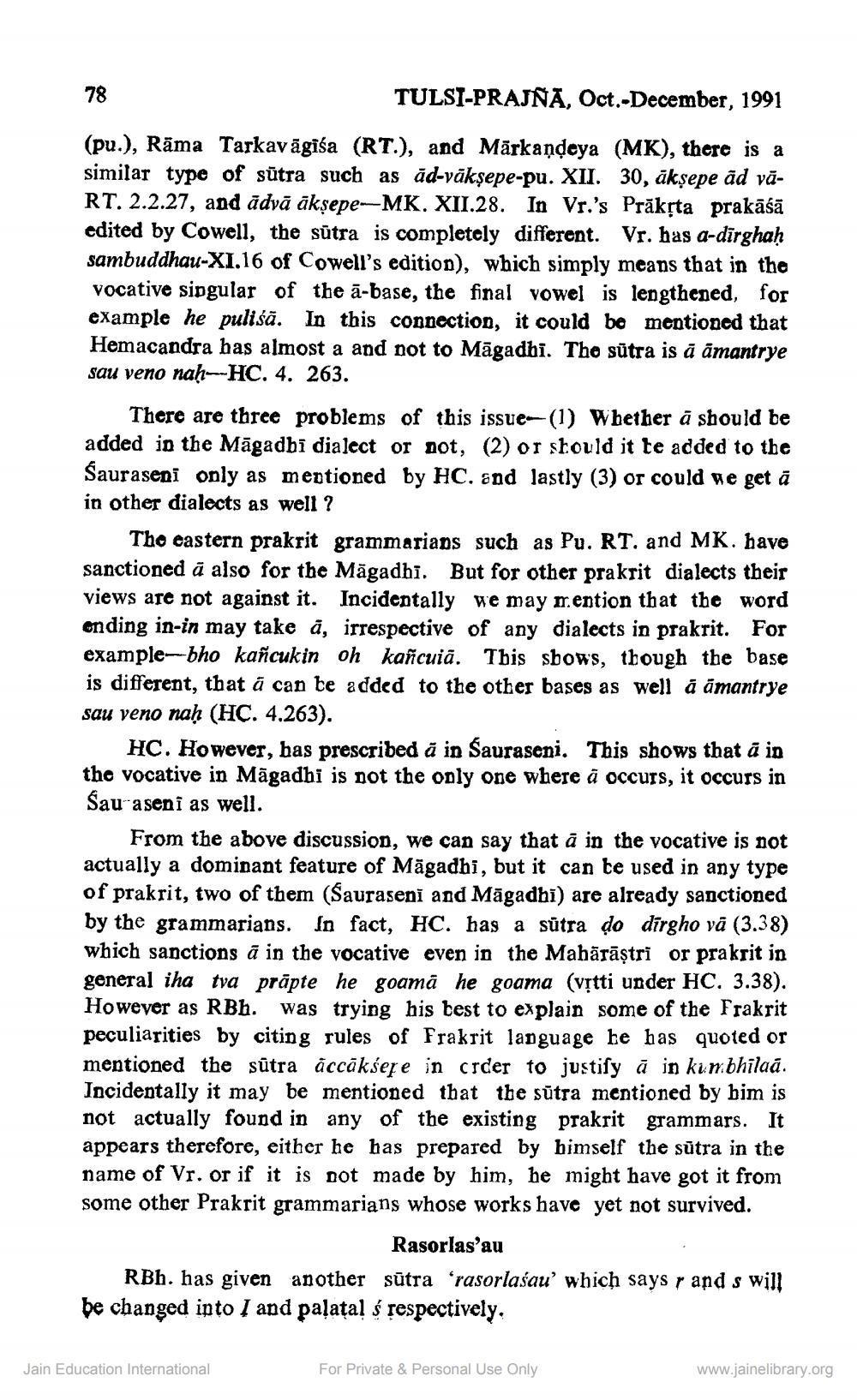________________
78
TULSI-PRAJNA, Oct.-December, 1991
(pu.), Rāma Tarkavägisa (RT.), and Markandeya (MK), there is a similar type of sutra such as ad-vākṣepe-pu. XII. 30, ākṣepe ād vāRT. 2.2.27, and advā ākṣepe-MK. XII.28. In Vr.'s Prākṛta prakāśā edited by Cowell, the sutra is completely different. Vr. has a-dirghaḥ sambuddhau-XI.16 of Cowell's edition), which simply means that in the vocative singular of the a-base, the final vowel is lengthened, for example he puliśă. In this connection, it could be mentioned that Hemacandra has almost a and not to Magadhi. The sutra is ā āmantrye sau veno naḥ-HC. 4. 263.
There are three problems of this issue (1) Whether a should be added in the Magadhi dialect or not, (2) or should it be added to the Sauraseni only as mentioned by HC. and lastly (3) or could we get ā in other dialects as well?
The eastern prakrit grammarians such as Pu. RT. and MK. have sanctioned ā also for the Magadhi. But for other prakrit dialects their views are not against it. Incidentally we may mention that the word ending in-in may take a, irrespective of any dialects in prakrit. For example-bho kañcukin oh kañcuia. This shows, though the base is different, that a can be added to the other bases as well a amantrye sau veno naḥ (HC. 4.263).
HC. However, has prescribed ā in Sauraseni. This shows that a in the vocative in Magadhi is not the only one where a occurs, it occurs in Sau aseni as well.
From the above discussion, we can say that a in the vocative is not actually a dominant feature of Magadhi, but it can be used in any type of prakrit, two of them (Sauraseni and Magadhi) are already sanctioned by the grammarians. In fact, HC. has a sutra do dīrgho vā (3.38) which sanctions a in the vocative even in the Mahārāștri or prakrit in general iha tva prapte he goamā he goama (vṛtti under HC. 3.38). However as RBh. was trying his best to explain some of the Frakrit peculiarities by citing rules of Frakrit language he has quoted or mentioned the sutra accāksere in crder to justify a in kumbhilaā. Incidentally it may be mentioned that the sutra mentioned by him is not actually found in any of the existing prakrit grammars. It appears therefore, either he has prepared by himself the sutra in the name of Vr. or if it is not made by him, he might have got it from some other Prakrit grammarians whose works have yet not survived.
Rasorlas'au
RBh. has given another sutra 'rasorlaśau' which says r and s will be changed into I and palatal s respectively.
Jain Education International
For Private & Personal Use Only
www.jainelibrary.org




